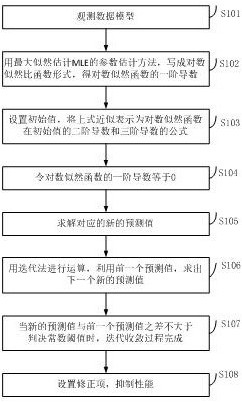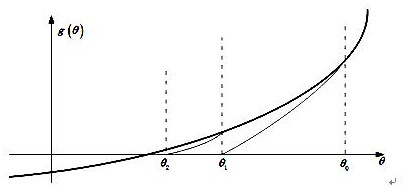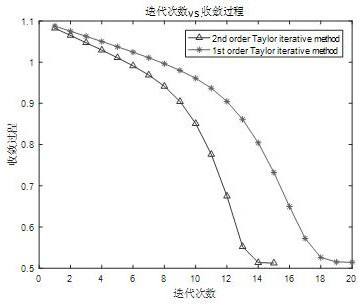An Improved Adaptive Fast Iterative Convergence Solution Method and System
An iterative convergence and self-adaptive technology, applied in the field of number detection, can solve problems such as the inability to adjust the convergence threshold, the inability to meet the calculation requirements of real-time tasks, and the lack of development of high-order derivatives of logarithmic likelihood functions, etc.
- Summary
- Abstract
- Description
- Claims
- Application Information
AI Technical Summary
Problems solved by technology
Method used
Image
Examples
Embodiment Construction
[0055] In order to make the object, technical solution and advantages of the present invention more clear, the present invention will be further described in detail below in conjunction with the examples. It should be understood that the specific embodiments described here are only used to explain the present invention, not to limit the present invention.
[0056] Since the conventional iterative method is based on the principle of first-order Taylor series expansion for iterative estimation, this method only develops the second-order derivative of the log-likelihood function, and does not develop the higher-order derivative of the log-likelihood function. When the logarithm When the second-order derivative of the likelihood function is small, the parameter iteration does not converge due to the large fluctuation of the correction item. The conventional method does not set an adaptive convergence threshold, and lacks a mechanism to suppress the fluctuation of the correction it...
PUM
 Login to View More
Login to View More Abstract
Description
Claims
Application Information
 Login to View More
Login to View More - R&D
- Intellectual Property
- Life Sciences
- Materials
- Tech Scout
- Unparalleled Data Quality
- Higher Quality Content
- 60% Fewer Hallucinations
Browse by: Latest US Patents, China's latest patents, Technical Efficacy Thesaurus, Application Domain, Technology Topic, Popular Technical Reports.
© 2025 PatSnap. All rights reserved.Legal|Privacy policy|Modern Slavery Act Transparency Statement|Sitemap|About US| Contact US: help@patsnap.com



